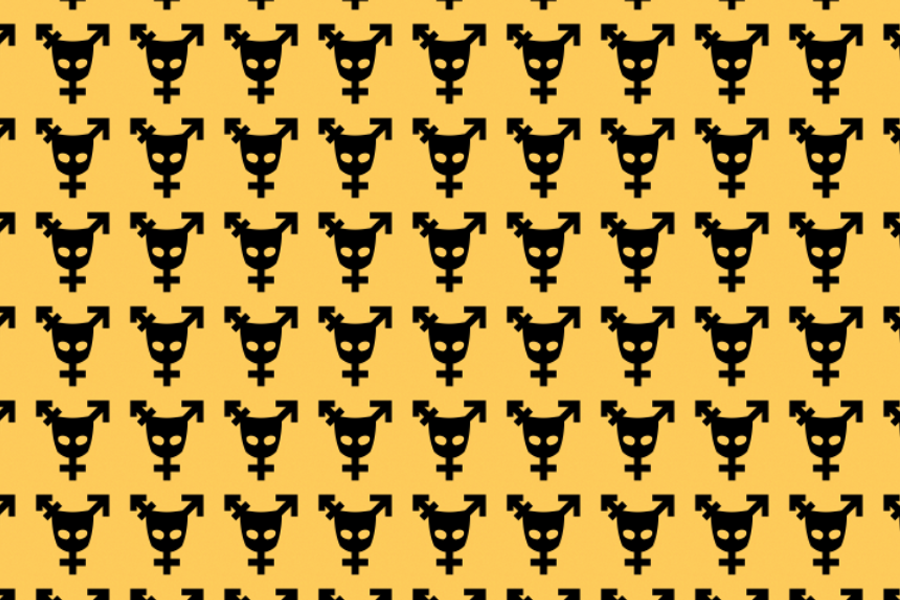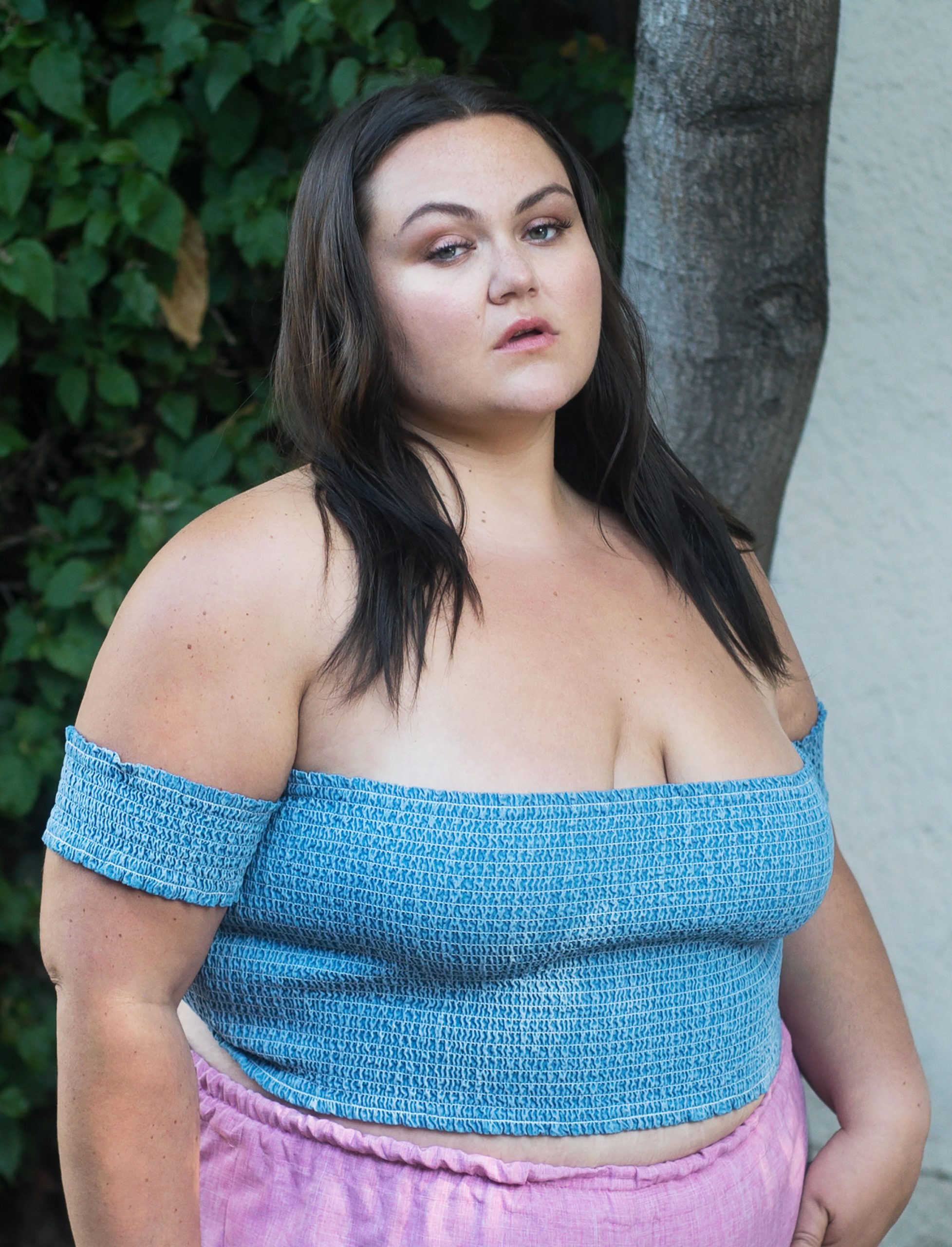The Grindr office is located within the Pacific Design Center, the brightly colored architectural marvel turned corporate megaplex in West Hollywood, L.A.’s gay mecca. And within the Grindr office is the Grindr for Equality team, the faction of the app that disseminates information about health and safety to queer people around the world. Its mission: To make an impact on the LGBTQ community beyond the politics of pleasure — and to put as much of an emphasis on the “T” and “Q” portion of the acronym as it does the “G.”
To that end, Drian Juarez is Grindr for Equality’s latest hire. A noted trans activist, Juarez previously worked at the L.A. LGBT Center, where she created the Transgender Economic Empowerment Project, which continues to help transgender people secure employment. In the process, she’s also trained hundreds of employers, including the LAPD, about how to be more responsible employers when it comes to incorporating transgender talent into their workforce.
I recently caught up with Juarez about how Grindr attempts to protect the safety of its users in regions such as the Middle East and North Africa where being gay or trans can be a death sentence; why we need to allow for terms that we might find offensive here in the U.S. (like “transvestite”) are perfectly acceptable in Latin America (and a different cultural context); and how Grindr has never really just been for gay dudes in the first place.

You launched the Transgender Job Fair in 2008, a program that trains employers about matters of gender diversity and inclusion before matching companies with transgender applicants. You’ve said that you’ve witnessed a lot of change since then — in terms of both general awareness of what being transgender means and the way employers approach hiring transgender folks — but now that a decade has gone by, what point would you most want to relay today?
Don’t be afraid of what’s different. Don’t be afraid to listen and learn from someone about how they identify, who they date and how they live their life instead of making assumptions. People need to have an open heart and mind and acknowledge their own privilege. Heteronormative privilege is, of course, a thing, but that privilege needs to be considered within our own community, too. If you’re a gay man or lesbian woman who passes for straight, acknowledge what that means and how it impacts your life.
These conversations aren’t only important for queer people to have with straight or cis people; we need to talk to each other as well. Privilege can be geographic. There are plenty of queer people of color who don’t feel comfortable in West Hollywood, even though it’s considered a hub of gay culture, because they feel WeHo is very classist, white and male. So when we’re talking about inclusion within the LGBTQ community, those are the things we’re starting to look at more deeply.
I’m a trans woman of color and an immigrant to this country, but I still have privilege, too. I may not be rich, but if I have an apartment, if I drive a car and if I have a job and insurance that allows me to transition, I have privilege. My experience isn’t the same as the experiences of transgender women who have just immigrated in order to escape violence in their own country, who don’t speak the language and don’t know about any local resources.
All which is to say I’m well-aware of the privilege I also wield.
How does all of this play into your role as a program manager at Grindr For Equality?
A lot of what we do is use our platform and geolocation technology to broadcast messages about organizations, services and events around the world. For example, we’ll have an organization in Southeast Asia doing HIV testing at a nightclub on a certain night, and we’ll share information about it to that region on our app. We deal with health and safety and let people know where to get PrEP or PEP. We also disseminate political information, like letting people know which of their local politicians are LGBT-inclusive and which are in support of LGBT rights. In order to do so, we’re building relationships with organizations globally, teaching them how to use our platform to promote their services and resources. It’s been a great tool for groups who don’t have big budgets to be able to reach a wider range of people.
Connecting people to other community members, especially in rural and more isolated areas, has always been central to Grindr’s function. And as we create more content, both through Grindr For Equality and our online magazine, we’re reintroducing Grindr to people in terms of who the platform is for and how the brand is evolving. Trans men and trans women have always used Grindr, but now, we’re doing more to make trans users feel safe and included within the platform.
Does Grindr operate in different ways in different places, depending on where a user is geographically?
Yes. That’s what’s so exciting about the work that we’re doing — we’re evolving alongside the community we serve. In different parts of the country, users can use a Grindr with a completely different avatar. There are also some safety protocols that we have put in place in regions where there’s a lot of danger with being identified as LGBTQ or queer, where people can enter a PIN before they can open their Grindr app.
For example, in some parts of Latin America, being referred to as travesti is part of the lingo and not offensive. Where in the U.S., we obviously don’t use “transvestite.” That’s considered an antiquated term.
In the Middle East and North African regions, we’re careful with how we phrase our messaging to be sure it’s never putting anyone in danger, especially in places where folks could be arrested. We won’t advertise exactly where a location is, for instance, and we’re careful about where we place ads. I’m constantly looking at what we can do and what kinds of changes we can make to keep people safe.
Part of Grindr for Equality is being sure we’re doing this work in a culturally competent way, respecting various communities along with their histories and identities and not coming in and dictating what’s happening or what language is being used. We try to just enhance what’s already gone in particular regions and be authentic in this way. This gives us an opportunity to think about language and how to be regionally specific.
How do you think cis people, including members of the queer community, can better support transgender folks?
There’s no simple way to say, “Just do A, B and C, and you’ll be good.” It’s making being inclusive and not making assumptions foundational to your life. That’s the commitment we need, which entails constantly challenging one’s self and looking for ways to help.
When we get a little, we have to do a little more. It’s not enough for companies to hire gay men and think that fulfills their diversity quota. So if you’re a successful gay man or someone with a lot of passing privilege, why not ask your company how many transgender people work there? And why not suggest they hire more transgender people? Why not ask if your insurance programs cover transitional care so that more transgender people can feel comfortable? If you’re part of the LGTBQ community or really want to be an ally, I believe it’s your responsibility to say to yourself, “My foot is in the door, so how can I now open that door wider for others?”

